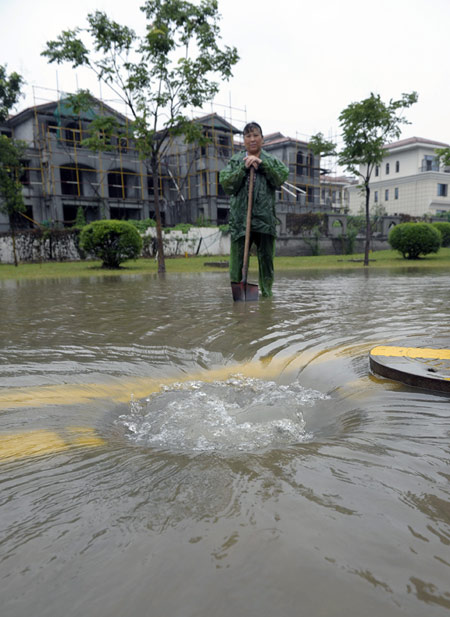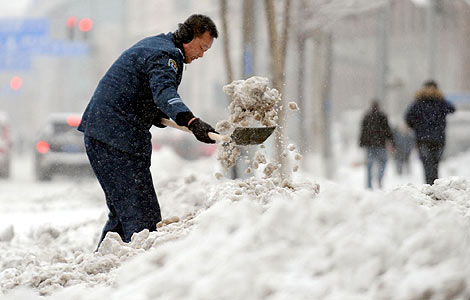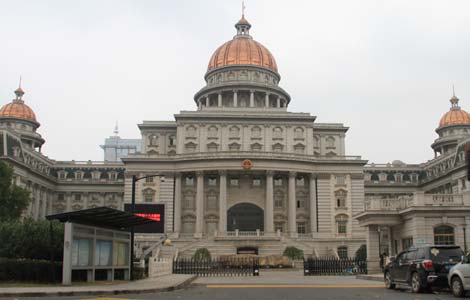
Climate change has triggered more floods in China and challenged drainage systems in big cities, experts say.
 |
|
A worker removes a manhole cover to accelerate drainage on a waterlogged road in Nanjing, Jiangsu province, on Thursday. The city experienced heavy rain when it was hit by Typhoon Haikui. Yang Duoduo / for China Daily |
"Although the rain is still more frequent in the south than in the north, there is a tendency that rainstorms sweeping northern provinces are as strong as those in the south," Wu Zhenghua, a researcher of the Beijing Meteorological Bureau and member of Beijing Disaster Relief Association, said at a news conference on coping with urban flood disasters held by the China Association for Science and Technology.
The record precipitation was 126.4 mm in one hour in Beijing, while it was not very different from the 115 mm record in Hong Kong, 107 mm in Wuhan, Central China's Hubei province, and 185 mm in Jinan, East China's Shandong province, Wu said.
The July 21 rainstorm in Beijing, the heaviest in 61 years, caused precipitation as high as 541 mm in a township in Fangshan district, Wu said.
The 16-hour rain brought 170 mm of precipitation on average to the city and killed at least 79 people.
Statistics show that the rainfall intensity in northern provinces in China has increased in recent years, especially after 2008, Wu said.
"Global warming has increased the temperature in the middle and high latitudes of the Northern Hemisphere, resulting in more water-vapor exchange and heat exchange with low-latitude regions, and thus bringing more frequent heavy precipitation," he said.
Wu said he is not sure whether the rainy climate will last for one or two decades, as some other experts say, but he suggests the government make long-term plans, including increasing the urban drainage capacity.
Since 2011, Shanghai, Wuhan and Guangzhou have announced multibillion-yuan projects to maintain and upgrade drainage systems.
But these cities still suffered floods because their drainage systems were poor, said Fang Chuanglin, an urban-planning expert of the Institute of Geographic Sciences and Natural Resources Research under the Chinese Academy of Sciences.
"The problems with the drainage systems include improper arrangement of pipelines and outdated design. Most pipes are designed for the worst rainstorm in three or five years, some can only cope with the heaviest rain once a year," he said.
According to a recent report from Science Technology Weekly magazine, more than 90 of Beijing's underpasses rely completely on water pumps to deal with heavy rain, and most drainage pipes in the city can only cope with 36 to 45 mm of rainfall per hour.
The situation in Guangzhou is not much better, as 83 percent of the pipes are only capable of dealing with rain of 50 mm per hour.
"The design of Beijing's drainage system follows a standard published in 2006. We are not setting the standard of the pipelines according to the areas they cover. Instead, the standard is based on the significance of a road or an area," said Huang Qian, one of the designers of Beijing's drainage system, quoted by the Beijing News on Wednesday.
A new drainage standard published by the Beijing Municipal Commission of Urban Planning follows the old tradition the work area of central government bodies should be capable of resisting the worst rain in 10 years; municipal-level government and cultural relic sites should withstand the worst rain in five years; and the standard for other regions is to handle the biggest rain in three years.
Contact the writer at chengyingqi@chinadaily.com.cn







